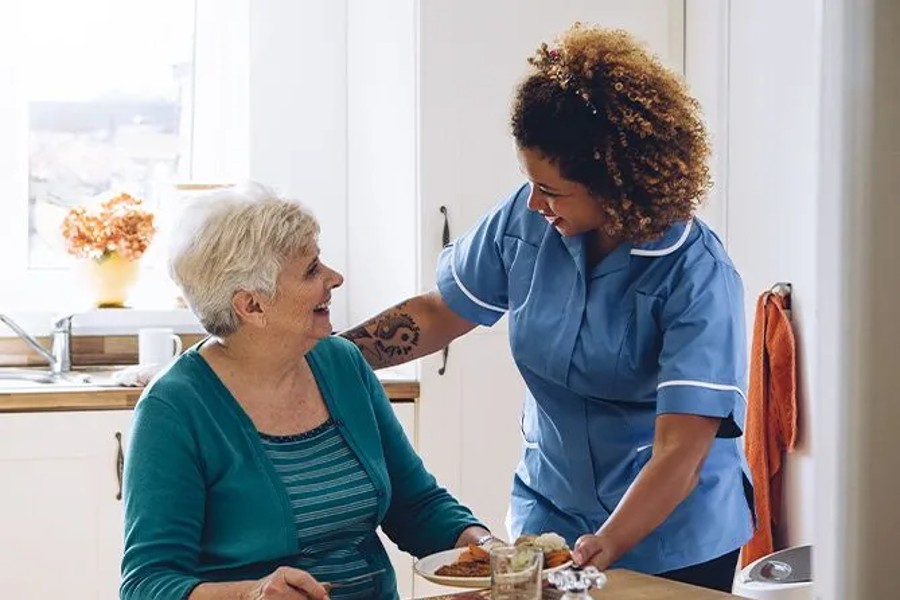
The New York City Department of Health and Mental Hygiene today announced that overdose deaths decreased slightly in 2023 after four consecutive years of increases.
The number of overdose deaths in New York City in 2023 was 3,046 — a 1 percent decrease from 3,070 in 2022 — marking the first time the number of deaths has declined since 2018. Additionally, according to provisional data, there were 616 overdose deaths in the first quarter of 2024, the lowest quarter on record since 2020.
“… make life-saving resources available for people …”
“A 1 percent decrease in drug overdose fatalities may not seem like a statistic worth celebrating to some — but those are still 24 fewer lives that were lost this past year, 24 families who still have their loved one around — and I believe that is a milestone worth recognizing,” said New York City Mayor Eric Adams. “I commend the agencies, health care workers, and community-based organizations who have been working tirelessly to make life-saving resources available for people suffering from drug addiction.”
“For every life saved from overdose or substance use disorder, there is a family and community standing with that person,” said Deputy Mayor for Health and Human Services Anne Williams-Isom. “The numbers reflected here showing a 1 percent decrease in overdose deaths — the first drop in four years — are modest but are a large impact for all those families with full chairs at their dining table and all their loved ones pursuing their life’s goals in our beloved city. Thank you to the Health Department, to NYC Health + Hospitals, to the Chief Medical Examiner’s Office, and all those agencies and community organizations helping New Yorkers touched by this issue avert overdose and return to life’s journey. We have much more work to do to tackle this issue and we are working together to save more lives in the coming years.”
“Our hearts ache for every life cut short from drug overdose in our city,” said New York City Department of Health and Mental Hygiene Commissioner Dr. Ashwin Vasan. “The overdose crisis intensified throughout the pandemic and other public health emergencies. Yet the focus of my agency’s hard-working staff as well as our partners toiling day and night in the community has been strategic and purposeful. We have invested our money and energies wisely in overdose prevention, treatment, and community-based services, delivered without judgment or stigma. And while still early, it appears that work is having an impact and saving lives. Onward we go.”
“Every life saved from overdose is a triumph,” said Executive Deputy Commissioner Dr. H. Jean Wright II. “We continue to dedicate our efforts and collaborate with community partners to provide support, treatment and care that prioritizes compassion and empathy to New Yorkers that need it the most, so that they can find healing and care when and how they need it.”
“Fentanyl, a synthetic opioid that is 30 to 50 times stronger than heroin …”
Fentanyl, a synthetic opioid that is 30 to 50 times stronger than heroin, was present in 80 percent of all overdose deaths in 2023 and remained the most common substance involved in overdose deaths. Xylazine, a non-opioid sedative, was involved in 31 percent of opioid-involved overdose deaths in 2023, an increase from 22 percent in 2022.
While the number of deaths decreased citywide, disparities by race/ethnicity, age, gender, and neighborhood of residence persist.
Rates of overdose death remain highest among Black and Latino New Yorkers, residents of very high poverty neighborhoods, and New Yorkers ages 55 to 64. In 2023, overdose deaths decreased among male New Yorkers, White New Yorkers, and residents of low poverty neighborhoods. At the same time, overdose deaths remained disproportionately high among Black and Latino New Yorkers and increased among female New Yorkers, New Yorkers ages 55 to 64, and residents of very high poverty neighborhoods.
Residents of the Bronx continued to have the highest rate of overdose death (78.0 per 100,000), followed by residents of Staten Island (40.1 per 100,000), Manhattan (36.0 per 100,000), Brooklyn (32.9 per 100,000) and Queens (24.5 per 100,000). Hunts Point-Mott Haven, Crotona-Tremont, Highbridge-Morrisania, East Harlem, and Fordham-Bronx Park residents experienced the highest rates of fatal overdoses for the third year in a row.
Similar to previous years, about 70 percent of overdose deaths occurred inside a residence. Almost a quarter of overdose deaths occurred in a public setting.
The city remains committed to expanding access to stigma-free, evidence-based services as part of Care, Community, Action, a comprehensive strategy to address the overdose crisis. Overdose is also a central focus of HealthyNYC, New York City’s campaign to extend life expectancy, which sets a goal of reducing overdose deaths by 25 percent by 2030.
As part of ongoing efforts to address the crisis, the city has:
- Distributed more than 440,000 naloxone kits and 63,000 fentanyl test kits across the city since January 2023.
- Announced plans for Opioid Settlement Fund spending, including $12 million for Staten Island providers and a Health + Hospitals-operated family substance use clinic.
- Committed to expanding Relay, the Health Department’s emergency department-based nonfatal overdose response program. From June 1, 2017 to December 31, 2023, Relay served 9,883 individuals, many of whom were not connected to harm reduction or treatment services.
- Supported low-threshold health services for people who use drugs at fourteen syringe service programs, including overdose prevention resources and connections to substance use disorder treatment, mental health, and medical care.
- Supported access to evidence-based substance use disorder treatment by operating a buprenorphine Nurse Care Manager program at 27 safety-net primary care clinic sites and funding and providing oversight to 66 OASAS-licensed substance use disorder programs.
- Launched four public health vending machines to dispense free harm reduction, hygiene and first aid supplies. During their first year of operation, these vending machines were used over 18,000 times, often outside of hours New Yorkers can access support services.
- Funded six outreach and syringe litter teams in the Bronx and Manhattan which cleaned up and safely disposed of more than 270,000 ground syringes outside of regular Parks and Sanitation Department efforts, distributed nearly 9,000 naloxone kits, made more than 41,900 participant contacts, and provided more than 12,000 referrals to health and basic needs services in 2023.
- Supported basic needs and health services at the City’s overdose prevention centers (OPCs). Since the launch of New York City’s two OPCs on November 30, 2021, OnPoint staff have intervened to mitigate the risk of overdose injury and death more than 1,600 times.
Individuals seeking support or treatment for substance use for themselves or their loved ones can call or text 988, or visit nyc.gov/988 for 24/7 confidential support. Call 911 in the event of a medical emergency.
“Each overdose death averted represents the renewal of possibility, and reaching this milestone after years of unrelenting loss testifies to the resilience of individual survivors and their loved ones,” said New York City Chief Medical Examiner Dr. Jason Graham. “While our work to end the public health crisis of overdose deaths must continue, these numbers herald a reason to feel hopeful. We are gratified to play our part in this promising development by providing prompt data to our partner agencies and helping families affected by overdoses make direct connections to life-saving support services.”
“Substance Use Disorder and overdose deaths are major public health crises affecting our city and this new data shows we are successfully working to turn things around,” said Daniel Schatz, MD, Medical Director of Substance Use Disorder Services in the Office of Behavioral Health at NYC Health + Hospitals. “We are deeply committed to advancing a cultural and clinical shift in understanding and treating patients living with substance use disorder. With tens of thousands of patients presenting to our system annually, we have an opportunity to make a positive and lasting impact during each and every encounter. Whether it is making our patients feel seen, treating them with dignity, reducing risk, or starting life-saving treatment, we are dedicated to addressing this crisis, alongside the community, in a patient-centered way.”
“Substance Use Disorder and overdose deaths are major public health crises affecting our city and this new data shows we are successfully working to turn things around,” said Daniel Schatz, MD, Medical Director of Substance Use Disorder Services in the Office of Behavioral Health at NYC Health + Hospitals. “We are deeply committed to advancing a cultural and clinical shift in understanding and treating patients living with substance use disorder. With tens of thousands of patients presenting to our system annually, we have an opportunity to make a positive and lasting impact during each and every encounter. Whether it is making our patients feel seen, treating them with dignity, reducing risk, or starting life-saving treatment, we are dedicated to addressing this crisis, alongside the community, in a patient-centered way.”
“The citywide data released today by the NYC Department of Health and Mental Hygiene is encouraging and highlights the tireless efforts of our healthcare professionals and community advocates on the front lines, working diligently to save lives,” said Bronx Borough President Vanessa L. Gibson. “While we celebrate this progress, we must recognize that Bronx residents remain disproportionately impacted by this epidemic. It is crucial that we continue to invest in harm reduction strategies, holistic care services, and initiatives that prioritize the health and wellness of every individual in our communities. By collaborating with the NYC Department of Health and Mental Hygiene, our government colleagues, and healthcare advocates, we can ensure that all residents receive the comprehensive care they need to overcome addiction and lead healthy, fulfilling lives.”
“As Chair of the City Council’s Health Committee, I am encouraged by the decrease in overdose deaths in 2023, the first decline we’ve seen in four years,” said Council Member Lynn Schulman. “This progress, while promising, reminds us of the urgent need to continue fighting the overdose crisis with all available resources. We must ensure that all communities—especially those disproportionately affected – have access to life-saving services and support. I look forward to continuing this momentum with DOHMH as we work toward a future of no lives lost to preventable overdoses.”
“… disproportionately impact Black and Latino communities in the City …”
“Today’s report shows a slight decrease in overdose deaths in New York City, a hopeful sign after four years of increases. Yet, in the Bronx, the overdose death crisis remains acute and continues to disproportionately impact Black and Latino communities in the City,” said State Senator Gustavo Rivera. “I am appreciative of the City’s continued support of our first-in-the-nation overdose prevention centers and remain committed to passing my bill, the Safer Consumption Services Act (S399A), which will authorize Overdose Prevention Centers (OPCs) statewide, an evidence-based solution in our fight against overdose deaths.”
Photo credit: HWM.
Become a Harlem Insider!
By submitting this form, you are consenting to receive marketing emails from: . You can revoke your consent to receive emails at any time by using the SafeUnsubscribe® link, found at the bottom of every email. Emails are serviced by Constant Contact








